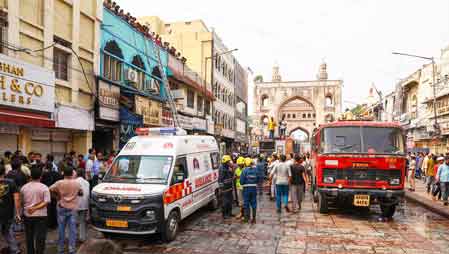As Indian drones, bombs and missile strikes wreaked havoc in Pakistan from May 7 to May 10, under the Operation Sindoor, this not only exposed Pakistan’s fragile air defence system but also showed the poor efficacy of Chinese fighter jets deployed by Pakistan for securing its borders.
As widely reported, Pakistan remains heavily dependent on Chinese defence imports, accounting for nearly 82 per cent of its total defence imports. As India struck deep inside Pakistan, in response to its escalation bid, the operation served as a real-world test for Chinese military technology and also went to show the gross underperformance of its aircraft as well as the failure to prevent air attacks.
The failure and underperformance of Chinese systems, as reported widely, not only impacted Pakistan's military effectiveness but also China's reputation as a global arms exporter.
Below are the details of how Chinese-powered jets and defence systems failed miserably:
Air Defense Systems (HQ-9, HQ-16/LY-80):
Chinese-made HQ-9 air defence systems were deployed by the Pakistan Army to intercept Indian aircraft or missiles during the conflict, but the Indian forces successfully bypassed and jammed Pakistani air defence systems, including the ones deployed near critical military installations.
The ineffectiveness of HQ-9 and other Chinese air defence units has raised questions about their detection and response capabilities, especially against advanced Indian and Western systems. Though there was no official word from either side but many Chinese social media handles attributed the HQ-9's failure to inadequate training and operational inefficiencies on the Pakistani side, giving credence to the report that the Chinese air defence system was effectively breached by India’s niche weapons.
Air-to-Air Missiles (PL-15):
Chinese-made PL-15 air-to-air missiles were touted as a rival to Western counterparts like the American AIM-120D, but they failed to reach any intended targets. The Indian military officials also collected fragments of a recovered PL-15 missile in Hoshiarpur, which had landed without hitting anything.
Fighter Jets (J-10C, JF-17):
Despite Pakistan deploying Chinese-made J-10C and JF-17 Block III fighter jets, equipped with PL-15 missiles, they were unable to significantly impede or deter Indian airstrikes.
While the two nations engaged in an intense military warfare, Pakistan initiated a propaganda war by claiming that it shot down multiple Indian jets, including Rafales. All these claims remain unsubstantiated till date, as no debris of any Indian aircraft has been presented by Pakistan.





Two minor children of a family drown in Tripura
Two minor children of a family -- both brother and sister -- drowned to death near a school at Purba Chandmari area in West Tripura, police officials said on Sunday.
Operation Sindoor exposes vulnerability and inefficacy of Chinese air defence units in Pakistan
The Operation Sindoor has established marked superiority of the Indian military over the Pakistani counterpart, despite the latter deploying Chinese-made weapons, arsenal and air defence system for securing its airspace.
Civil servants are the backbone of governance: Tripura CM
Tripura Chief Minister Manik Saha on Sunday said that public representatives think of many plans, schemes and policies for the benefit of the public, but ultimately, these are implemented by civil service officials.
Agartala Smart City CEO Shailesh Yadav inspects ongoing drainage work in Agartala
Chief Executive Officer of the Agartala Smart City Dr Shailesh Yadav on Sunday inspected the work and said that the works shall be completed before the arrival of monsoon season.
Union Minister Rajiv Ranjan Singh emphasis on making Tripura a ‘Fish Surplus State’; lays foundation for establishment of Integrated Aqua Park in Kailasahar
The Union Minister of Fisheries Rajiv Ranjan Singh on Sunday laid the foundation stone for establishment of an Integrated Aquapark under Pradhan Mantri Matsya Sampada Yojana (PMMSY), worth ₹42.4 crores in Kailashahar.
India's pharma sector ranked 3rd in world, leads in affordable drugs
India's pharmaceutical industry, which has emerged as the largest supplier of affordable generic medicines, is poised to grow at 7.8 per cent year-on-year in April 2025 driven by strong demand and new products, according to experts at India Ratings.
Hyderabad fire: Staircase filled with smoke blocked escape
The building that caught fire near historic Charminar here on Sunday, resulting in the death of 17 people, had only one staircase, which was filled with smoke, blocking the escape for the victims, a top official said.
India on track to become a global drone hub by 2030: BJP's Amit Malviya
India is on track to become a global drone hub by 2030, said BJP leader Amit Malviya on Sunday, hailing Prime Minister Narendra Modi’s vision for the growth of the drone industry. He also underscored the stellar role played by drones during Operation Sindoor.